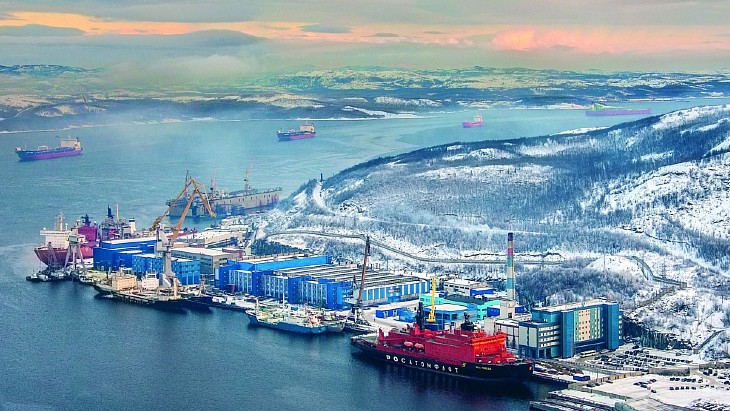Year-round navigation of eastern part of Northern Sea Route planned for 2024

In a government meeting to discuss goods and services chaired by Russian President Vladimir Putin, much of the focus was on the potential of the Northern Sea Route and the role of nuclear-powered vessels, notably the newly developing fleet of ice-breakers.
Putin said: "The Northern Sea Route is opening, this is obvious. Colleagues just spoke about climate change, like it or not, this is happening." He added that other countries were keen to be involved in the development of the route, which he called a strategic priority for Russia.
Development of the Northern Sea Route sees cargo vessels travelling through Arctic waters from northern Europe to east Asia and facilitating year-round passage is the prime mission of Russia's nuclear icebreaker fleet. As well as icebreakers, there is also a need for barge-based floating nuclear power plants to power the development of Arctic ports.
Minister for the Development of the Far East and the Arctic, Alexei Chekunkov, said that cargo traffic on the Northern Sea Route had grown from 4 million tonnes in 2014 to 34 million tonnes in 2022 and had "already become a key transport corridor for the export of oil, liquified natural gas, mineral fertilisers, metals and other high value-added products to world markets ... the volume of production of such products will increase significantly in the coming years ... the task is to ensure a carrying capacity of 100 million tonnes by 2026 and 200 million by 2030".
The ministry had, with Rosatom, launched the regular route from Murmansk to Kamchatka in 2022 with a subsidised tariff - with loads rapidly jumping from 15% on the first journey to 90%. This year there would be three trips and the number of ports was being increased from 4 to 11 and the route extended to Vladivostok.
He said that while "unfriendly states" were rethinking their previous plans to use the route "we are seeing growing interest in using the route from China, India and countries in southeast Asia". He outlined the investment needed in developing the route but said it "will bring significant additional revenues to the state which will create a new quality of life in the Russian Arctic".
Rosatom Director General Alexei Likhachev said that European sanctions on Russian oil and oil products had been a challenge "but also opened a new window of opportunity ... we are working on redirecting Russian oil from the Baltic ports to the Northern Sea Route ... thanks to the Northern Sea Route it became possible to transfer many maritime activities from west to east".
He said that the scale of development of the route required a sharp increase in the Arctic maritime fleet, saying there were currently 30 vessels in operation and 33 more under construction while "the construction of four floating nuclear power plants continues", adding that interest in them "both in Russia and in the world is constantly growing".
As well as five nuclear icebreakers "it is necessary to make a decision this year to start building four more non-nuclear floating power units - in total we will need up to 100 Arctic-class vessels as well as at least 15 floating power units", Likhachev said. "The staffing issue is very important. Taking into account the required number of vessels, by 2030 alone we will need at least 7500 seafarers, this includes the needs of the nuclear icebreaker fleet of at least 1500," added Likhachev.
He added that the plan was "to launch year-round navigation in the eastern part of the Northern Sea Route early next year. This is a truly historic decision, important for the development of the entire Arctic and of particular importance, of course, for the economy of our country".
The third of Russia's Project 22220 nuclear-powered icebreaker vessels, the Ural, took its first working journey in December 2022. The vessels which have twin RITM-200 reactors are 173 metres long and designed to break through 2.8-metre-thick ice at up to 2 knots. The wide 33-metre beam at the waterline is designed to match the 70,000 tonne ships they are designed to clear a path for.
Arktika was the first Project 22220 ship, with those following known as series vessels. The Sibir entered service in January 2022. Two more of the ships are under construction: the Yakutia and the Chukotka, which are slated for service in 2024 and 2026, respectively.
_92619.jpg)

_84504.jpg)







_50521.jpg)

